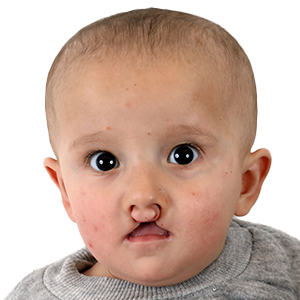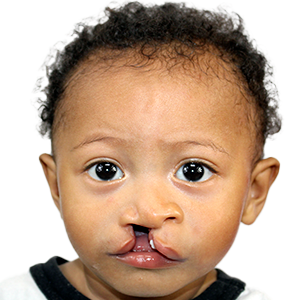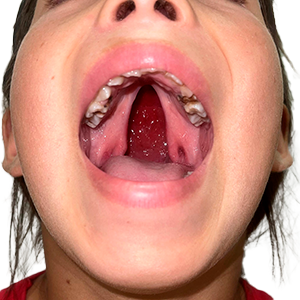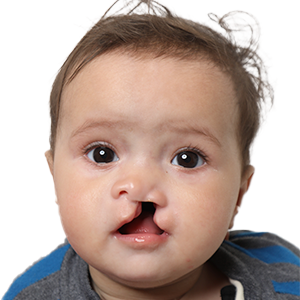Cleft Lip & Palate
An orofacial cleft is a gap or opening in the lip and/or the roof of the mouth (palate). It develops during the early stage of pregnancy when the facial structures do not fully fuse together.
- A cleft lip can be in the upper lip, either on one side, both sides, or in the center, and sometimes it can even extend into the nose.
- A cleft palate is an opening in the roof of the mouth. Cleft lip and cleft palate can happen together or independently.
Cleft is one of the most common congenital birth defects in the world, occurring on average in 1 of every 700 live births. The incidence of cleft is higher in some populations, including people of Asian, Latin, and Native American descent.
What Causes Cleft Lip and/or Palate
Researchers have not identified the exact cause of cleft, but they have identified several factors, both genetic and environmental, that may contribute to the condition. Environmental factors may include maternal smoking, drug and alcohol use, illness or infections, or lack of folic acid during pregnancy. Genetic factors may include ethnicity, consanguinity, and a family history of cleft.
Cleft occurs more frequently in underserved communities throughout the world. This is due in part because women have less access to basic healthcare and prenatal care, as well as a higher rate of food insecurity and vitamin deficiency. Researchers continue to explore why cleft occurs and how it can be prevented.
Children born with cleft can encounter many obstacles. Physically, their cleft may affect their eating, hearing, speaking, and breathing, while emotionally, these children may be bullied at school or hidden at home.
Types of Cleft

Bilateral Cleft Lip

Unilateral Cleft Lip (Right)

Cleft Palate

Unilateral Cleft Lip (Left)
